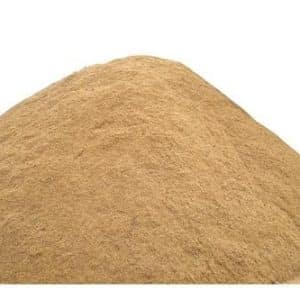A guide to South African indigenous trees
Trees, hedges and borders

Trees provide shade, privacy, attractive foliage and beautiful flowers, and they also improve air quality, reduce noise and hide undesirable views. If you plant an indigenous tree, it will also work that much harder to attract birds and butterflies to your garden, while being far more drought-resistant than an exotic tree species.
WHAT ARE INDIGENOUS TREES?
A tree, or plant, is indigenous to a region or an area if it grew and evolved there through natural processes. Benefits of planting indigenous varieties include the fact that it is often much hardier and more attractive to the local wildlife.
SOME OF OUR FAVOURITE SOUTH AFRICAN INDIGENOUS VARIETIES:
The Kei Apple (Dovyalis caffra): This small indigenous evergreen tree has glossy green leaves and long, sharp thorns, making it an excellent choice for boundary walls where you require extra security. If you plant both a male and a female plant in your garden, you’ll be rewarded with bright yellow fruit in February. The fruit is delicious and attractive.
The Tree Wisteria (Bolusanthus speciosus): A wisteria is one of the prettiest of spring-flowering trees and likes a sunny spot with well-draining soil. It is a deciduous tree that can reach a height of up to 7m and produces attractive pea-shaped mauve flowers in spring and summer.
The Fever Tree (Vachellia xanthophloea): This fast-growing indigenous tree grows 12–15m tall, with an 8–10m wide spread, so it’s perfect for gardens with lots of room. The smooth bark is a bright yellow-green and birds love nesting in its branches while butterflies are attracted to the yellow fluffy blossoms that appear in spring and early summer.
Bladdernut or Swartbas (Diospyros whyteana): This tree has a neat growth habit, glossy dark green leaves and small white bell-shaped flowers in spring, followed by fruit enclosed in papery cases that attract birds. It grows in semi-shade or full sun and is an excellent tree for a small garden. It can also be grown as a shrub and makes an attractive bonsai.
Fuchsia (Halleria lucida): This tree makes an attractive feature tree in the garden, with a height and spread of 5m. Orange-red flowers grow on the older wood of the main trunk and larger branches and they attract sunbirds and bees.
DISCOVER THE FOLLOWING SOUTH AFRICAN INDIGENOUS TREES AT YOUR LOCAL STODELS:
Western Cape branches
- Forest bushwillow (Combretum kraussii)
- Butterspoon tree (Cunonia capensis)
- Camphor bush (Tarchonanthus camphoratus)
- White karee (Searsia pendulina)
- Weeping wattle (Peltophorum africanum)
- Sneezewood tree (Ptaeroxylon obliquum)
- Waterberry (Syzygium cordatum)
- Sycamore fig (Ficus sycomorus)
- White stinkwood (Celtis africana)
Centurion branch
- River bushwillow (Combretum erythrophyllum)
- Fever tree (Vachellia xanthophloea)
- African holly (Ilex mitis)
- False olive (Buddleja saligna)
- Karee (Searsia lancea)
- Tree wisteria (Bolusanthus speciosus)
- Henkel’s yellowwood (Podocarpus henkelii)
- Cape Ash (Ekebergia capensis)
- Weeping boer-bean (Schotia brachypetala)
- Zulu cherry-orange (Teclea gerrardii)
- Yellowwood (Podocarpus latifolius)
- Tree fuchsia (Halleria lucida)
- White stinkwood (Celtis africana)
- Wild plum (Harpephyllum caffrum)
- Natal Mahogany (Trichilia dregeana)
- Forest elder (Nuxia floribunda)
You might also like
Shop online
-
POKON ORCHID 250ML
- R114.99
- Add to cart Learn More
-
RIVER SAND
- R49.99 – R59.99
- Select options This product has multiple variants. The options may be chosen on the product page Learn More




